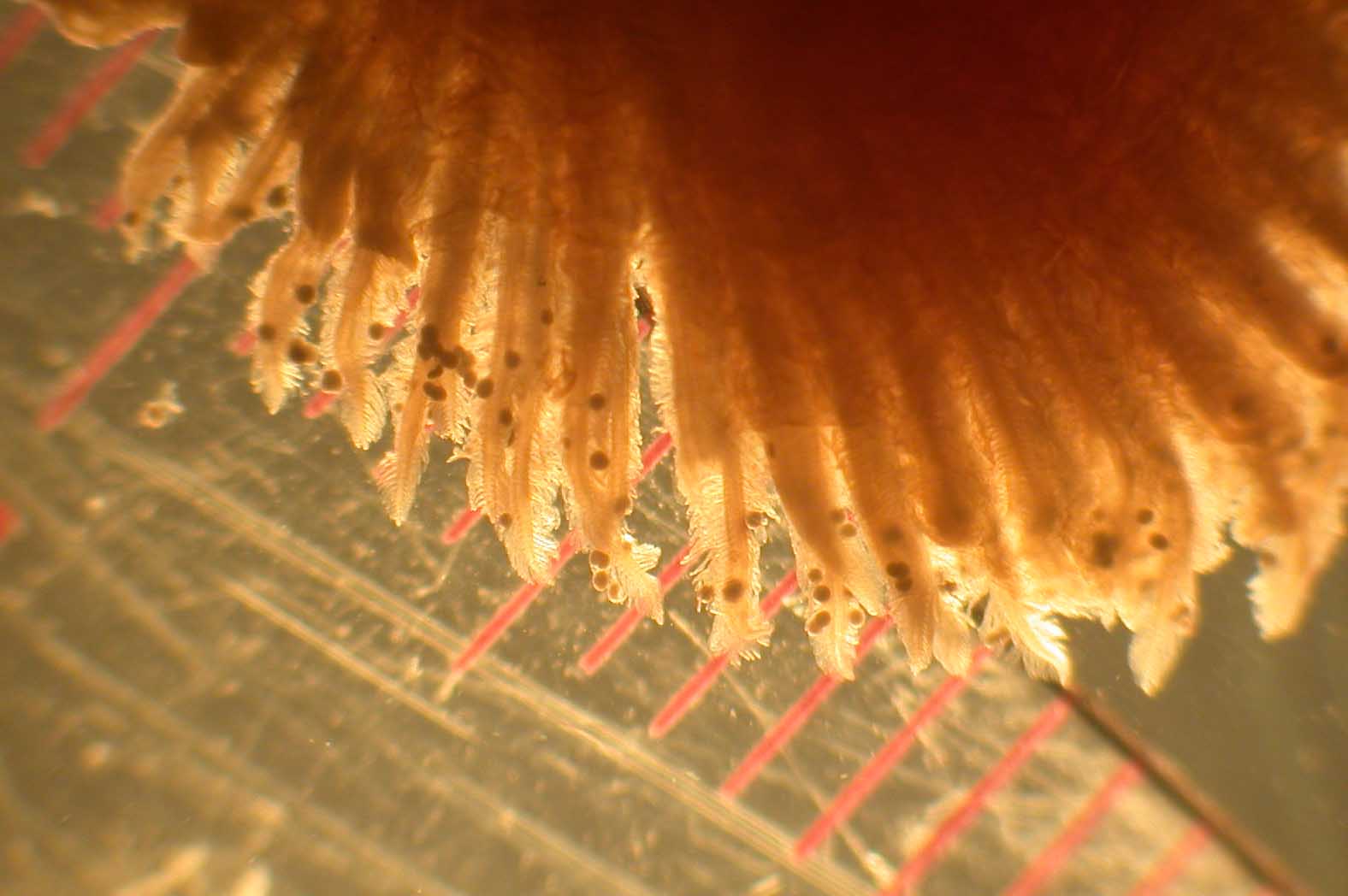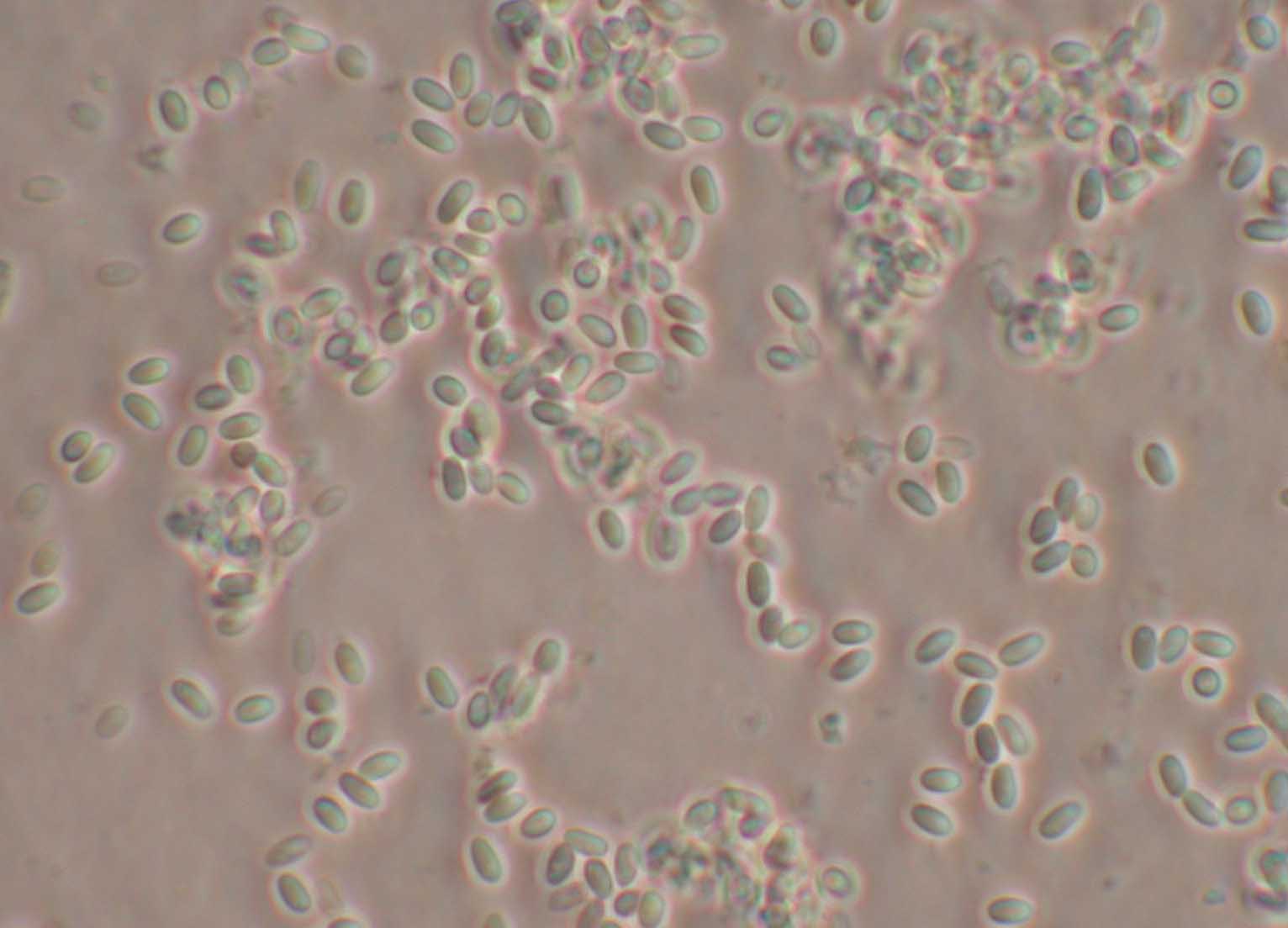
| Parasite | Loma branchialis |
|---|---|
| Taxonomy | Microspora, Microsporea |
| Hosts | Gadoid fishes including Atlantic cod (Gadus morhua), Alaska pollock (Theragra chalcogramma) and haddock (Melanogrammus aeglefinus). |
| Infection site | Primarily gill. Heart and liver in heavily infected fish. |
| Clinical sign | Many spherical xenomas (a complex formed by a host cell and a parasite) are observed in the gill (Fig. 1). |
| Parasitology | A number of spores are produced inside the xenomas (Fig. 2). An ellipsoidal spore is 4.8 mm in mean length and 2.3 mm in mean width. |
| Pathology | Heavily infected fish exhibit a growth retardation, a low condition factor, a low hematocrit value, finally resulting in mortality (Khan, 2005). |
| Health hazard | Since this parasite is not infectious to human, it is harmless in food hygiene. |
| Diagnosis | Check the spores by wet-mount of xenomas. The sample should be smeared and stained by Uvitex 2B followed by a fluorescent microscopic observation. The stained spores emit blue fluorescence under UV radiation. |
| Other information | This parasite has been reported from gadoid fishes in the North Sea and the North Atlantic Ocean. Pathogenicity of Loma branchialis has been recently highlighted because disease outbreak occurred in cultured Atlantic cod. |
| References | Khan, R. A. (2005):
Prevalence and influence of Loma
branchialis (Microspora) on growth and mortality in Atlantic cod (Gadus morhua) in coastal Newfoundland. J. Parasitol., 91, 1230-1232. |

(Photos by Mark Freeman)
Fig. 2. Fresh spores of Loma branchialis

Fig. 1. Numerous xenomas of Loma in the gills of Alaska pollack.